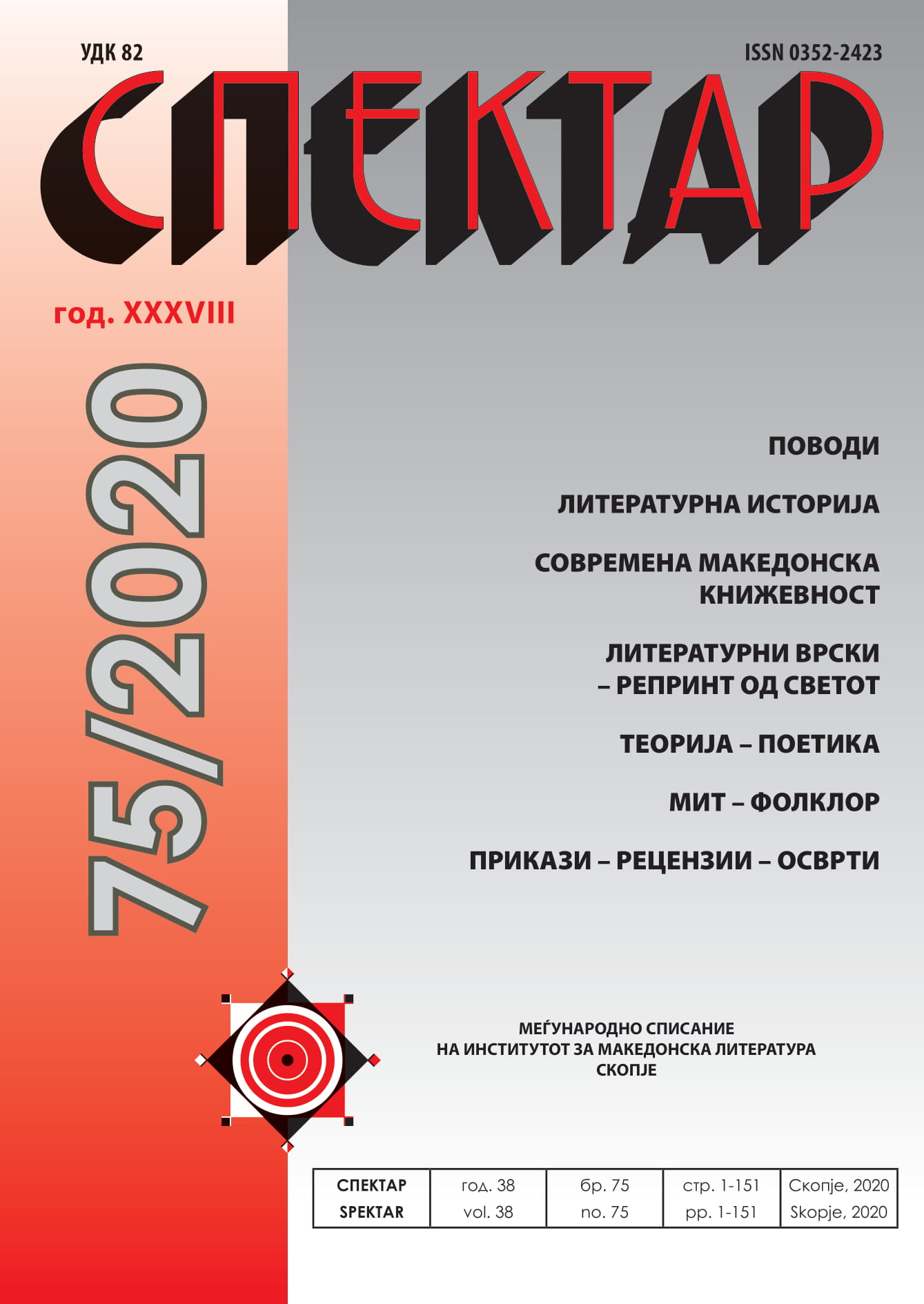„СМЕАТА НА МЕДУЗАТА“ ОД ХЕЛЕН СИКСУ – ПРВ МАНИФЕСТ НА ЖЕНСКОТО ПИСМО
THE LAUGH OF THE MEDUSA OF HÉLÈNE CIXOUS – THE FIRST MANIFESTO OF ÉCRITURE FÉMININE
Author(s): Marina MijakovskaSubject(s): Philosophy, Language and Literature Studies, Literary Texts
Published by: Институт за македонска литература
Keywords: woman; the manifesto of écriture féminine; writing; bodily inscription; body language
Summary/Abstract: In “The Laugh of the Medusa of Hélène Cixous – The First Manifesto of Écriture Féminine“ the first manifesto of woman’s writing as écriture féminine is illustrated. Hélène Cixous defines écriture féminine as a text written by femininity and with the female body language. According to Cixous, feminine writing is circular and fluid similarly to the female body. Women writers have a maternal sense of self, and that is why they write with white ink, i.e., with breast milk and the mother’s gender role. Based on this thesis, Cixous equates the mother with the writer. According to Cixous, writing for women is an attempt to change the world. She points out that every female subjectivity is unique and is a key to writing different women’s histories and experiences in language. The main thesis of Cixous in this manifesto is that the transformation of women’s history can be accomplished on two levels: a) At the level of individuality - The woman writes for herself. She will turn into the body that is placed like a strange alien on the screen. The body’s censorship censors both breath and voice. Thus, the writer will penetrate into the secrets of the female body organs and gender markers when writing. Body territories that are darkened by self-awareness and self-analysis lead to the exploration of the female body as a dark continent. The female subject realizing herself must urgently become aware of herself and start talking about herself. In this sense, the woman must inspire the breath of the whole woman aware of herself and aware of her needs. b) At the level of the female subject’s utterance - Writing about her own bodily sensations, the woman actually expresses herself and her spiritual state and breaks the trap of silence. The body speaks the truth, physically materializes what it thinks, sees, listens to and loves. She insinuates what she is saying outside the linear, objectified and generalized story of history. Through this, Cixous emphasizes female points of view and the female narrative and expressive subject(s) on the statement itself. This Manifesto defines the paradigm of écriture féminine and its stylistic features and themes. The creativity and metaphor of birth, sex differences and differences in literary discourse are presented as differences between female and male script. The power of women is to get out of syntax by breaking the popular themes, having to write about a small topic that they express. The writer uses bodily syntax, bodily and passionate words. The writer’s language is a body language. Body language is created when the oppressed exits through the act of utterance, and then, the voice and truth of women is heard.
Journal: Спектар
- Issue Year: 2020
- Issue No: 75
- Page Range: 93-106
- Page Count: 14
- Language: Macedonian

